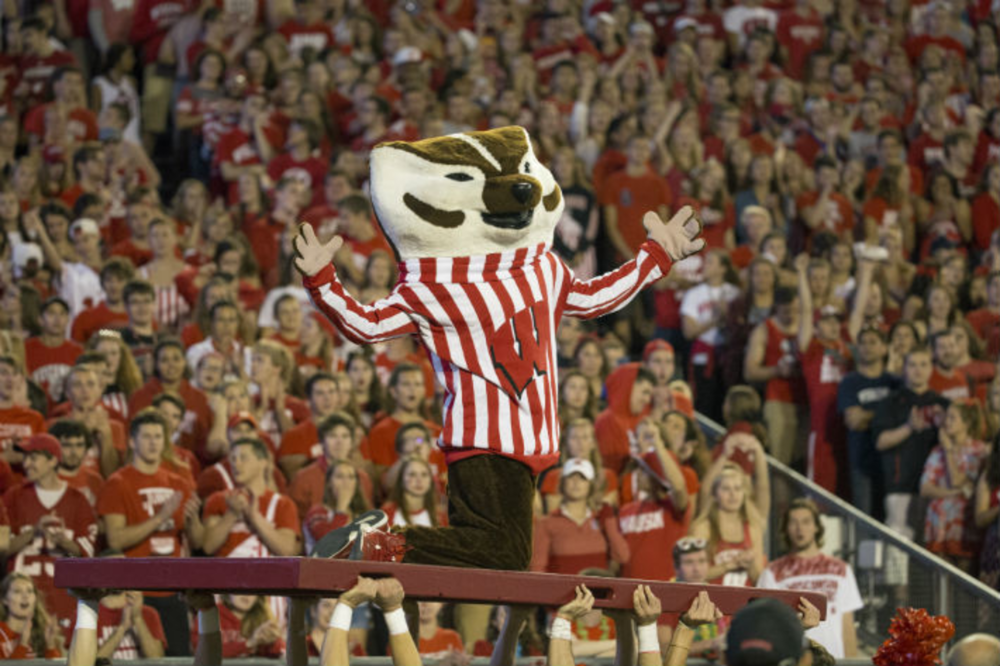Most sports teams have a building year—a time when they acquire fresh talent, get a feel for how the players work together, and identify new strengths in hopes of having a more victorious run next season. The University of Wisconsin Athletics department (Wisconsin)—home of the Badgers—had its own building year when it added beacons and geo-fencing to its marketing roster to boost fan engagement.
The preseason
Wisconsin decided to leverage beacons when it updated its Badger Gameday app this summer, following the installation of Wi-Fi in its football stadium and indoor arena last year.
“We just felt like it was time to upgrade the app with [the Wi-Fi installation] and provide our fans with a new and upgraded experience,” says Ben Fraser, director of external engagement for University of Wisconsin Athletics.
As part of the upgrade, Wisconsin worked with Yinzcam Inc., a mobile technology provider for sports teams, and introduced new app features like live game-day video, multi-camera-angle replay, and player stats. The Badgers department also implemented Gimbal’s beacon and geo-fencing technology to directly message fans.
“We always try to be on the forefront of technology here at Wisconsin,” Fraser says. “This was another way—not only with the app, but through the beacons—we thought that we could be a trendsetter in the space.”
Game day
Wisconsin launched its app September 1 and started testing the beacons on September 5 at the Badgers’ first football game of the season—the AdvoCare Classic against the Alabama Crimson Tide in Arlington, Texas. Even without its home field advantage, Wisconsin tweeted its fans to download the Badger Gameday app, turn on their Bluetooth and location services, and come to its official tailgate at the Texas Rangers’ stadium for a scavenger hunt. Fans who encountered a beacon received a congratulatory message and could pick up a celebratory T-shirt.
Wisconsin’s marketers were able to tailor the content and frequency of its messaging, Fraser says, by adjusting these facets in Gimbal’s CMS.
The athletic department also drew two different geo-fences: one at the Rangers’ stadium for the tailgate and one at the Dallas Cowboys’ AT&T Stadium, where the game was held. Fans who entered the geo-fences received a video message from either safety Michael Caputo or running back Corey Clement welcoming them to the events, similar to this one from the Badgers’ recent homecoming game.
Although fewer fans attend away games, Fraser says that Wisconsin still wanted to test out its beacons and geo-fences at the AdvoCare Classic because the fans who do travel tend to be the most loyal.
“We thought that would be a great opportunity to engage our fans and try something a little new and out of the box,” he notes.
Wisconsin also continued to leverage the beacons and geo-fencing technology at home. In addition to sending fans welcome messages when they entered its Camp Randall Stadium, Wisconsin sent game attendees seat upgrades or concession stand information.
U-rah-rah! Wisconsin!
So far the Badgers are 5-2 this season, and Wisconsin is performing just as well off the field. For instance, on the Badgers’ October 3 game against the Iowa Hawkeyes, Wisconsin sent its fans more than 5,000 messages. The athletic department is also tracking other metrics, such as how many people walk past the beacons.
“We’re seeing some good numbers in terms of usage and messages delivered throughout our events,” Fraser says. “We’re pretty much in the infancy stage, so we’re excited to see what we can do.”
On Wisconsin
As for future improvements, Fraser says he’d like to tie sponsors to Wisconsin’s mobile messaging. He also plans on leveraging the beacons and geo-fencing technology during the Badgers’ basketball season.
For instance, Wisconsin has a Priority Points System in which basketball fans can win points for performing a number of activities, such as attending non-conference games, posting on social media, and arriving at games before tip-off, Fraser says. Fans who accumulate a certain number of points can cash them in for priority seating at the Big Ten games. In the past, Wisconsin would assign points based on the ticket purchased. So even if a student sold his ticket or gave it away, he would still get the points, as opposed to the game-day attendee. Fraser says Wisconsin is hoping to tie the points to a Priority Points app by having students check-in through beacons. That way, he says, the students attending the games will be the ones receiving the points.
“It’s been a way to solve some issues in terms of some of our internal programs, as well,” Fraser says.
A strategic play
So how can other brands mimic Wisconsin’s success? Kevin Hunter, chief operating officer of Gimbal, advises marketers to consider beacons part of their larger, integrated strategy.
“Make sure that you look at it holistically,” he says.
As for Fraser, he recommends taking a crawl-walk-run approach and discourages marketers from incorporating sponsored messages right from the get-go. He also advises marketers to be bold and not stress too much about overwhelming consumers with messages.
“Don’t be afraid and don’t think that it’s going to be a burden on the consumer,” he says. “It’s something that they can choose to opt in or opt out on.”





